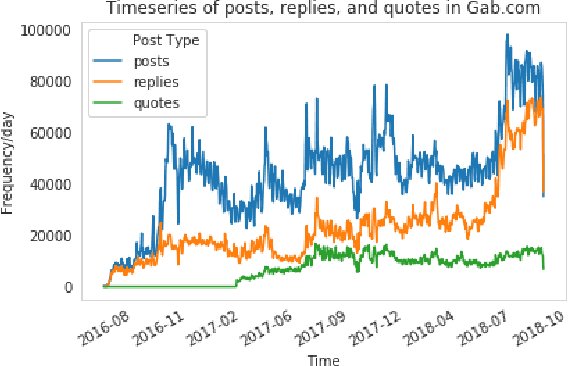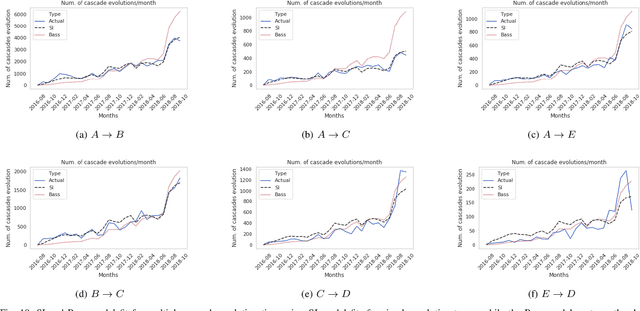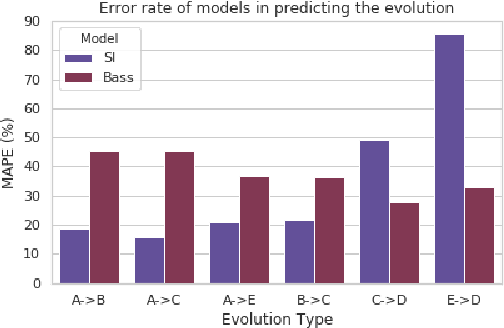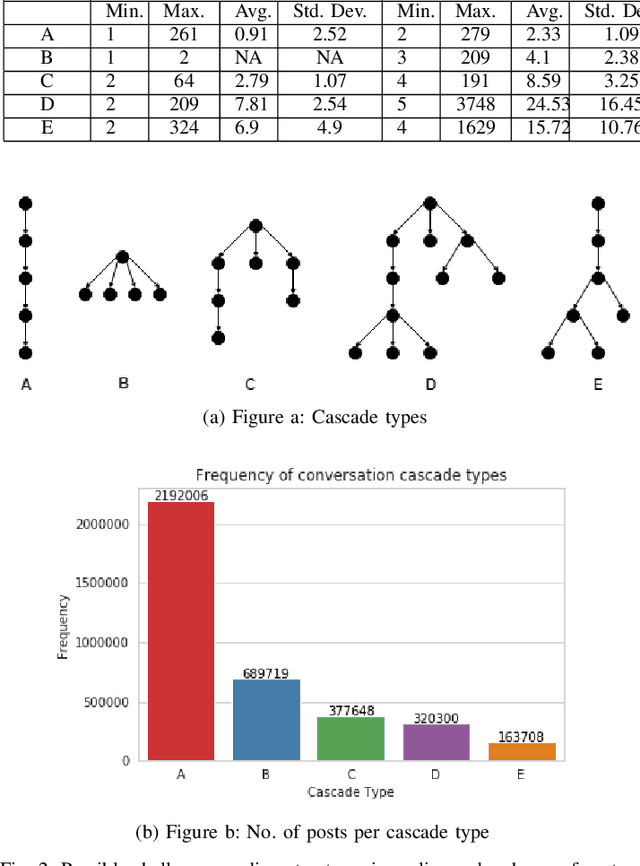Shannon Reid
Two-Stage Stance Labeling: User-Hashtag Heuristics with Graph Neural Networks
Apr 16, 2024Abstract:The high volume and rapid evolution of content on social media present major challenges for studying the stance of social media users. In this work, we develop a two stage stance labeling method that utilizes the user-hashtag bipartite graph and the user-user interaction graph. In the first stage, a simple and efficient heuristic for stance labeling uses the user-hashtag bipartite graph to iteratively update the stance association of user and hashtag nodes via a label propagation mechanism. This set of soft labels is then integrated with the user-user interaction graph to train a graph neural network (GNN) model using semi-supervised learning. We evaluate this method on two large-scale datasets containing tweets related to climate change from June 2021 to June 2022 and gun control from January 2022 to January 2023. Experiments demonstrate that our user-hashtag heuristic and the semi-supervised GNN method outperform zero-shot stance labeling using LLMs such as GPT4. Further analysis illustrates how the stance labeling information and interaction graph can be used for evaluating the polarization of social media interactions on divisive issues such as climate change and gun control.
Understanding Policy and Technical Aspects of AI-Enabled Smart Video Surveillance to Address Public Safety
Feb 08, 2023Abstract:Recent advancements in artificial intelligence (AI) have seen the emergence of smart video surveillance (SVS) in many practical applications, particularly for building safer and more secure communities in our urban environments. Cognitive tasks, such as identifying objects, recognizing actions, and detecting anomalous behaviors, can produce data capable of providing valuable insights to the community through statistical and analytical tools. However, artificially intelligent surveillance systems design requires special considerations for ethical challenges and concerns. The use and storage of personally identifiable information (PII) commonly pose an increased risk to personal privacy. To address these issues, this paper identifies the privacy concerns and requirements needed to address when designing AI-enabled smart video surveillance. Further, we propose the first end-to-end AI-enabled privacy-preserving smart video surveillance system that holistically combines computer vision analytics, statistical data analytics, cloud-native services, and end-user applications. Finally, we propose quantitative and qualitative metrics to evaluate intelligent video surveillance systems. The system shows the 17.8 frame-per-second (FPS) processing in extreme video scenes. However, considering privacy in designing such a system results in preferring the pose-based algorithm to the pixel-based one. This choice resulted in dropping accuracy in both action and anomaly detection tasks. The results drop from 97.48 to 73.72 in anomaly detection and 96 to 83.07 in the action detection task. On average, the latency of the end-to-end system is 36.1 seconds.
Examining Untempered Social Media: Analyzing Cascades of Polarized Conversations
Jun 10, 2019



Abstract:Online social media, periodically serves as a platform for cascading polarizing topics of conversation. The inherent community structure present in online social networks (homophily) and the advent of fringe outlets like Gab have created online "echo chambers" that amplify the effects of polarization, which fuels detrimental behavior. Recently, in October 2018, Gab made headlines when it was revealed that Robert Bowers, the individual behind the Pittsburgh Synagogue massacre, was an active member of this social media site and used it to express his anti-Semitic views and discuss conspiracy theories. Thus to address the need of automated data-driven analyses of such fringe outlets, this research proposes novel methods to discover topics that are prevalent in Gab and how they cascade within the network. Specifically, using approximately 34 million posts, and 3.7 million cascading conversation threads with close to 300k users; we demonstrate that there are essentially five cascading patterns that manifest in Gab and the most "viral" ones begin with an echo-chamber pattern and grow out to the entire network. Also, we empirically show, through two models viz. Susceptible-Infected and Bass, how the cascades structurally evolve from one of the five patterns to the other based on the topic of the conversation with upto 84% accuracy.
 Add to Chrome
Add to Chrome Add to Firefox
Add to Firefox Add to Edge
Add to Edge